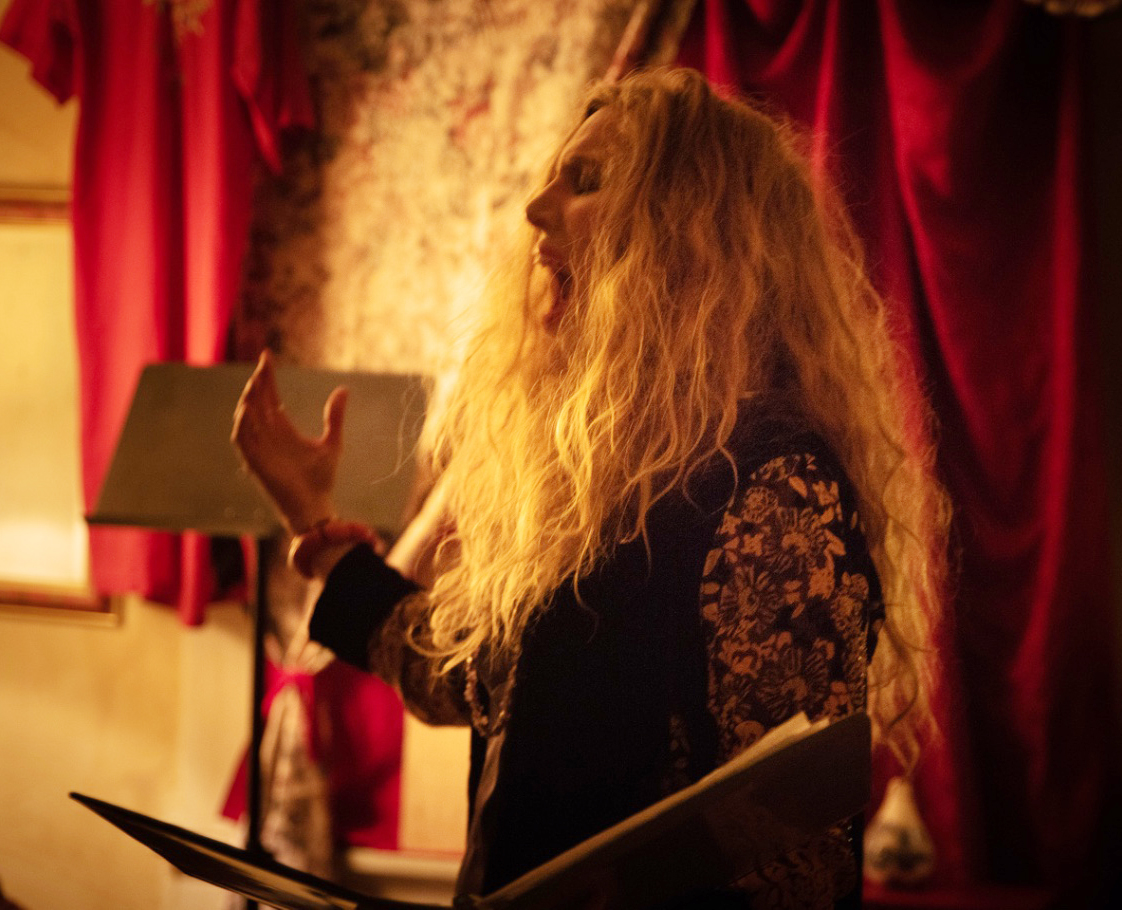In many ways, opera is the high point of the Western classical music tradition. Originating as royal entertainment in Italy at the close of the 16th century, opera evolved to become fashionable throughout Europe. This remained the status quo until the early 20th century, when the development of motion pictures and changing public taste relegated opera to the domain of the art-conscious upper class. As such, it was prone to “cultural upgrading” and composers like Schoenberg introduced atonality and other variations. Such High Art innovations did more to confuse than clarify the position of opera in modern music, so by the latter part of the 20th century, it was clear opera needed to be modernized in a more popular way. Avant-Pop arbiters like Peter Sellars began staging operas in new ways, like his 1980 production of Don Giovanni, cast, costumed and presented as a blaxploitation film, complete with nude actors and heroin addicts. As it would turn out, once this thematic Pandora’s box was opened, every kind of bastardization of the artform became possible in the name of forward aesthetic progress.

John Cage, Europeras 1 & 2, Photo courtesy Craig T. Mathew / Los Angeles Philharmonic
Not to be outdone by such wild musical youngbloods, the venerable composer John Cage decided to apply his personal brand of deconstruction to opera, and his 1987 Fluxus work Europeras 1 & 2 was the result. Currently directed by Yuval Sharon and staged in Culver City at Soundstage 23 in the Sony Pictures Studio, the production is hyped as “an opera of independent elements… determined by chance procedures.” So, although the orchestra was under strict directions to play “the actual instrumental parts in the literature”, Cage allowed the singers to belt out whatever aria they chose for as long as desired. Which basically means that the audience was subjected to a high-end clusterfuck of snippets of operatic arias, mixed and matched elaborate costumes, and non-existent stage direction, all of which was periodically interrupted by an overwhelmingly loud recording of Truckera, a tape of 101 layered fragments of European operas. None of the characters onstage related to one another, and even their accompanying props had nothing to do with their timeframe or identity; at one point, a nun with a surfboard stood at the edge of the stage, peering into the audience as though judging distant waves. Unfortunately, even in the Fluxus tradition such cheap laughs only fill ocular time and space until the next heresy, so this senselessness became disconcertingly boring after 90 minutes without pause. Perhaps in anticipation of this, the second segment of the opera promised two sections of supposedly refreshing silent, general inactivity. Even so, judging from the exodus during the intermission, an opportunity to hear a sample of Cage’s smash hit 4’33” wasn’t much of a motivator to stay.

Stories, Rachel Guettler in Room 14 at the Rendon Hotel, photo by Anthony Ausgang
Meanwhile, in Downtown L.A., a far less self-aggrandizing manifestation of operatic disconnection was taking place. Directed by Ralph Ziman and staged at the under-renovation Rendon Hotel, Stories presents actors in separate rooms engaged in activities as equally unrelated to each other as those in Europeras 1 & 2. The difference between the two productions is that while Sharon defies the audience to find any narrative in Cage’s visual and sonic cacophony, Ziman encourages such speculation; in fact, figuring out what’s going on is the whole the point of the experience. It’s a great idea, but the lack of any unifying element other than location make it impossible to connect the separate elements. It also doesn’t help that the majority of the acts are obviously by non-actors subscribing to the myth that calling something Performance Art excuses lack of professionalism. Fortunately, there are exceptions: in room 14, opera singer Rachel Guettler successfully presents herself as, well, an opera singer, later duetting marvelously with baritone Kenneth Enlow on an outside roof; and in room 20, Johnny Cubert White convincingly natters away in his room like a tweaker in the beginning stages of a meth binge. But the relative success of Stories lies in its lack of pretentiousness; when the going gets Lowbrow, the Lowbrow get going.

Stories, Johnny Cubert White in Room 20 at the Rendon Hotel, photo by Anthony Ausgang
Stories allegiance to its low roots ultimately makes it more interesting than Europeras’ claim of High Art, but it’s equally frustrating to experience. There are reasons that stage direction, plot, and developed talent are essential to calling an event opera or theatre. Without them it’s just like Humpty Dumpty, and no amount of deconstruction will ever put it together again.
Featured image of Rachel Guettler courtesy Andy Romanoff
Fluxus: Cage’s Europeras 1 & 2, Sony Pictures Studio, November 6, 10, 11, 2018
Stories, Rendon Hotel, November 9, 10, 11, 2018


